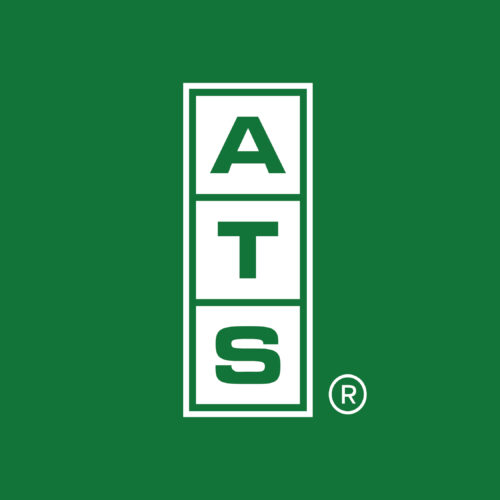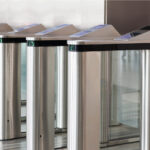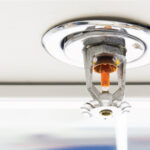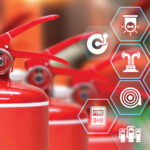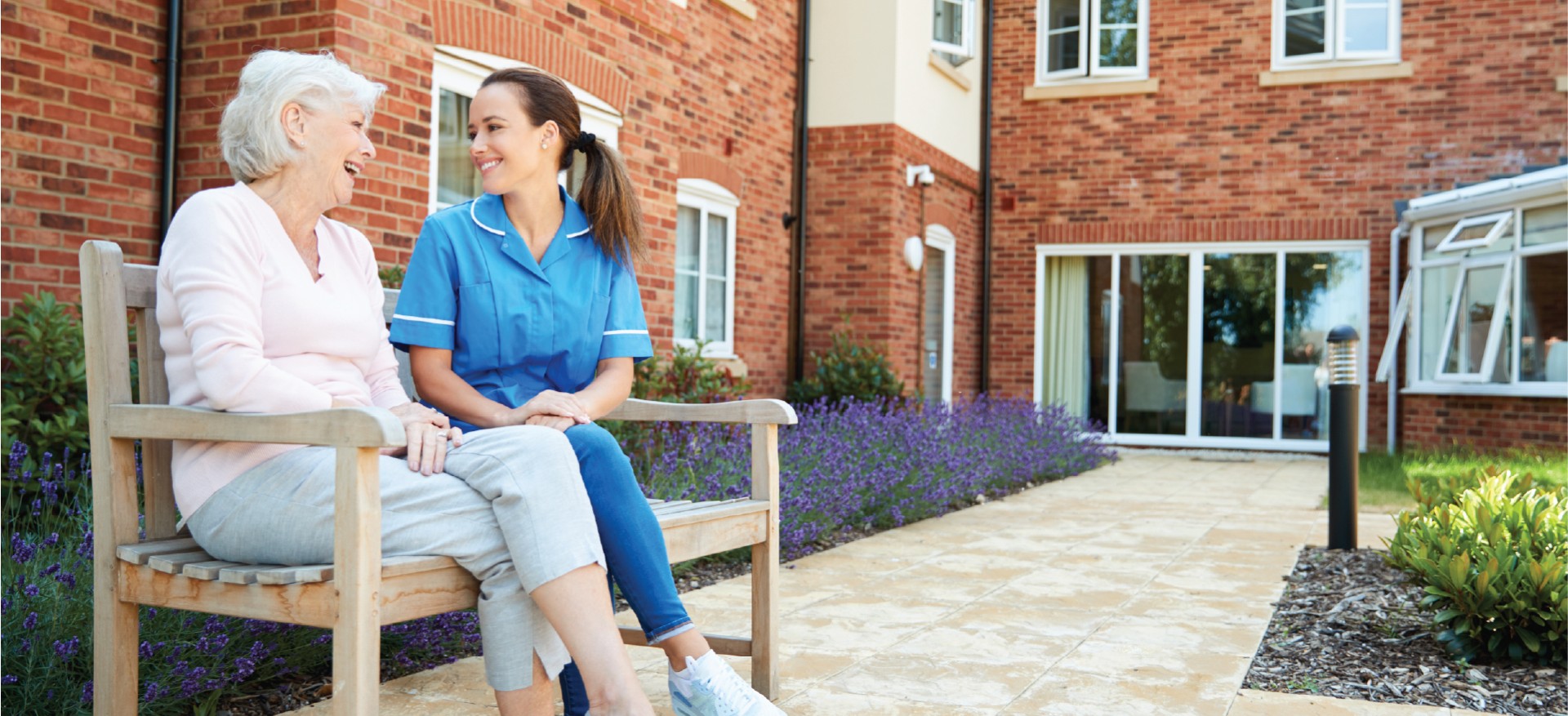Every September, National Preparedness Month reminds us that emergency planning can save lives. For education and assisted living facilities, where safety is paramount, the ability to respond to emergencies quickly and effectively depends on more than just protocols. It depends on the systems that support them.
At A Total Solution, we know that life safety isn’t just about having alarms and locks in place. It’s about creating an environment that’s ready to respond—with confidence, speed, and precision—no matter what crisis arises. Whether it’s a fire, intruder alert, medical emergency, or natural disaster, your facility’s response depends on the strength of your integrated safety systems.
In this blog, we explore how emergency planning begins with technology—and how facilities can prepare now to protect lives later.
Why Emergency Preparedness Is a Systemwide Responsibility
Schools and assisted living communities each serve vulnerable populations. Children and seniors may need assistance to evacuate, follow instructions, or communicate during an emergency. This places extra pressure on administrators and staff to have an emergency plan that not only acts quickly, but also ensures every second counts.
Emergency planning isn’t just a plan on paper. It’s the coordination of systems and people. Technology—when thoughtfully designed and properly integrated—helps bridge the gap between planning and action.
National Preparedness Month: A Time to Reassess Emergency Planning
National Preparedness Month, sponsored by FEMA each September, encourages organizations to evaluate their emergency planning, test their response strategies, and ensure systems are in place to support a coordinated effort. For schools and senior care environments, this is an ideal time to:
- Conduct emergency drills
- Inspect life safety systems
- Update contact and access lists
- Review evacuation plans
- Partner with safety system experts
Emergency planning is proactive. And being proactive starts with ensuring the core systems that support your response are up-to-date, code-compliant, and ready to work.
Life Safety Systems That Power Emergency Planning & Response
Facilities are only as ready as the systems they rely on. Here are the key technologies that support comprehensive emergency planning:
1. Fire Alarm Systems & Emergency Planning
In both schools and assisted living centers, a fire alarm system is the backbone of emergency planning. It alerts staff, initiates evacuation, and notifies authorities in real time.
- Early smoke and heat detection
- Zoned alerts for faster identification
- Automated notifications to local fire departments
- Integration with sprinklers and access control
Code Tip: NFPA 101 (Life Safety Code) outlines fire alarm requirements specific to both educational and healthcare occupancy types.
2. Sprinkler Systems & Emergency Planning
A reliable sprinkler system suppresses fires at the source, buying critical time before responders arrive.
- Reduces property loss and injury
- Must be inspected and maintained regularly
- Works in tandem with fire alarms and building automation systems
3. Access Control Systems & Emergency Planning
In any emergency plan, limiting who can enter or exit your facility during a crisis is vital.
- Lockdown capabilities during intruder events
- Remote locking/unlocking of doors
- Credential-based entry for staff and first responders
- Real-time event logging and alerts
For schools, secure vestibules and visitor management systems offer added control. In assisted living, access control can also help manage memory care residents prone to wandering.
4. Video Surveillance
Cameras are more than deterrents when considering emergency planning. They provide visibility into unfolding events and support law enforcement during active emergencies.
- Real-time monitoring from a central station or mobile device
- Integration with access control for visual verification
- High-definition footage to review incidents
Note: Some states require camera coverage in specific areas of schools or healthcare facilities—make sure your systems meet both code and community expectations.
5. Nurse Call Systems (for Senior Care) and Emergency Planning
In assisted living, medical emergencies often happen without warning. Nurse call systems allow residents or staff to request immediate help.
- Push-button or wearable call devices
- Priority alerts to mobile devices or nursing stations
- Analytics on response times
- Integration with fire and access systems
A well-integrated nurse call system can save lives, especially when every second matters.
6. Intrusion Detection & Emergency Planning
Motion sensors, door contacts, and glass-break detectors help protect against unauthorized entry—particularly important for schools.
- 24/7 monitoring of all perimeter points
- Automatic alerts during off-hours
- Visual and audible deterrents
The Cost of Being Unprepared
According to the CDC and FEMA, delays in emergency response cost lives. Whether it’s a fire, active shooter, or medical crisis, uncoordinated or outdated systems lead to:
- Slower evacuations
- Confusion among staff and responders
- Missed or false alarms
- Communication breakdowns
- Noncompliance with state and federal codes
Emergency planning isn’t just about preventing events. It’s about mitigating damage when emergencies happen.
Building a Culture of Emergency Planning & Readiness in Schools and Assisted Living
Emergency Planning For Schools:
- Implement layered access control (e.g., locked perimeters + classroom door locks)
- Use automated lockdown triggers tied to intrusion detection
- Install mass notification systems with audio/visual alerts
- Train staff and students with scenario-based drills
Emergency Planning For Assisted Living:
- Ensure seamless communication between nurse call, fire, and access systems
- Create evacuation plans that account for mobility challenges
- Use access control to secure sensitive areas (medication storage, memory care)
- Partner with vendors who understand AHCA and CMS compliance
Integrating Systems: The Real Key to Emergency Planning Success
The most advanced system in the world won’t help if it can’t talk to the others. That’s where A Total Solution brings value.
We design, install, monitor, and inspect fully integrated life safety systems:
- Our fire alarms trigger building-wide notifications and unlock emergency exits.
- Our access control works in concert with lockdown protocols and video verification.
- Our nurse call solutions integrate with fire and access platforms.
- Our video systems provide live support to emergency responders.
Integration reduces confusion, simplifies training, and maximizes safety.
Why Work with A Total Solution
Since 1988, we’ve helped Florida’s healthcare and education facilities prepare for the unexpected. Our team understands the unique challenges of:
- Assisted living and memory care
- Elementary and secondary schools
- Rehabilitation centers and group homes
- Private and charter institutions
We don’t just install equipment. We partner with you to create:
- Code-compliant designs
- Scalable, future-ready systems
- Rapid-response protocols
- Maintenance and inspection programs that keep you audit-ready
When you work with A Total Solution, you work with a team built to respond.
Final Thoughts: Emergency Planning Starts Before the Crisis
Emergency planning is more than an annual drill. It’s a culture—and it starts with the right systems. National Preparedness Month is the perfect time to ask: Is your facility truly ready to respond?
If you’re not sure, we can help.
From fire alarms to access control, we make sure every system works together so your team can do what matters most: protect the people who rely on you every day.



